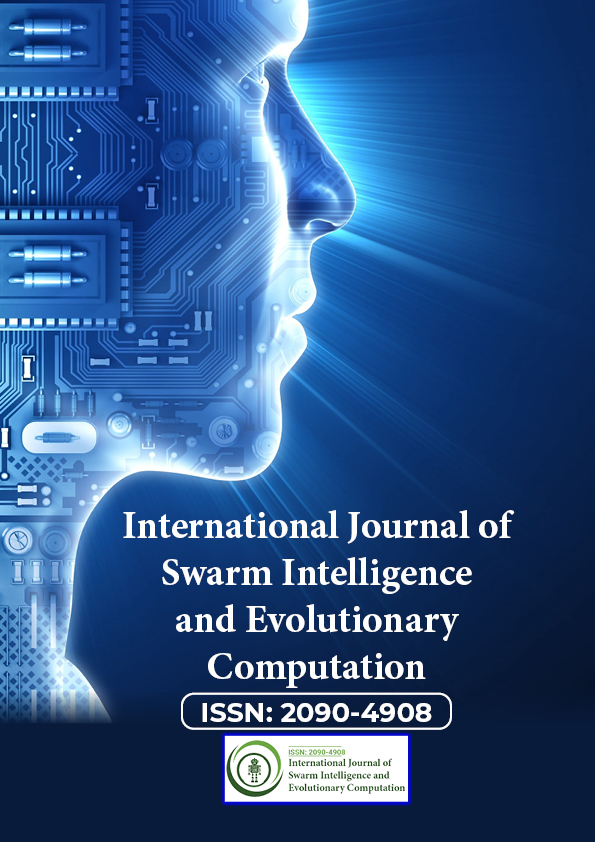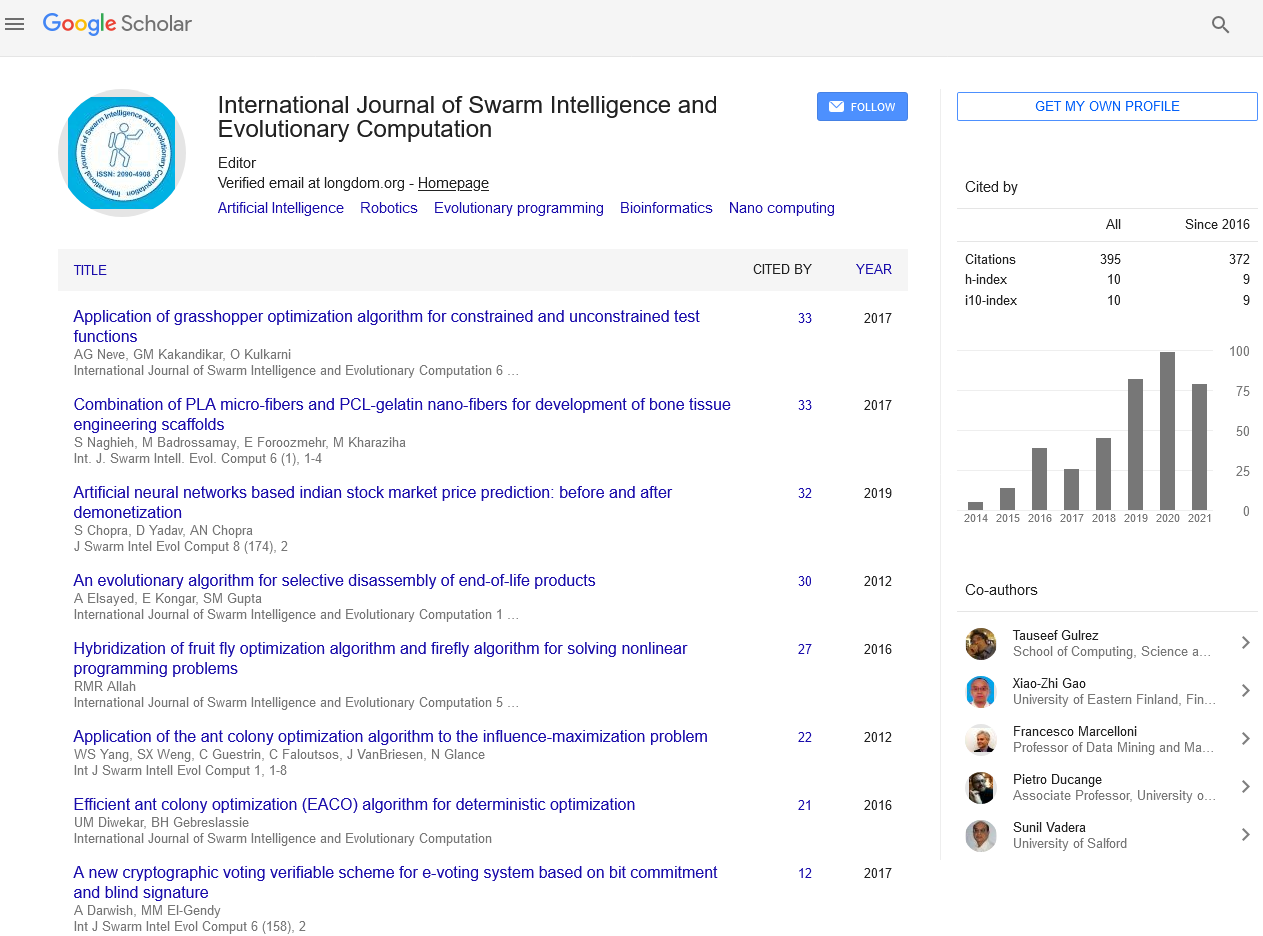Indexed In
- Genamics JournalSeek
- RefSeek
- Hamdard University
- EBSCO A-Z
- OCLC- WorldCat
- Publons
- Euro Pub
- Google Scholar
Useful Links
Share This Page
Journal Flyer

Open Access Journals
- Agri and Aquaculture
- Biochemistry
- Bioinformatics & Systems Biology
- Business & Management
- Chemistry
- Clinical Sciences
- Engineering
- Food & Nutrition
- General Science
- Genetics & Molecular Biology
- Immunology & Microbiology
- Medical Sciences
- Neuroscience & Psychology
- Nursing & Health Care
- Pharmaceutical Sciences
Perspective - (2023) Volume 12, Issue 2
Computational Medical Diagnostics: Advancements, Techniques and Challenges
Harris Samson*Received: 22-Feb-2023, Manuscript No. SIEC-23-20955; Editor assigned: 24-Feb-2023, Pre QC No. SIEC-23-20955 (PQ); Reviewed: 10-Mar-2023, QC No. SIEC-23-20955; Revised: 17-Mar-2023, Manuscript No. SIEC-23-20955(R) ; Published: 27-Mar-2023, DOI: 10.35248/2090-4908.23.12.305
Description
Computational medical diagnostics is an emerging field that involves the use of computer algorithms to diagnose medical conditions and overview of the key concepts and techniques involved in computational medical diagnostics, including machine learning, data analysis, and artificial intelligence.
Medical diagnosis is the process of identifying a disease or condition based on its symptoms and medical history. Traditionally, medical diagnosis has relied on the expertise of healthcare professionals, who use their knowledge and experience to make a diagnosis. In recent years, computational medical diagnostics has emerged as a promising new approach to medical diagnosis.
Computational medical diagnostics involves the use of computer algorithms to analyse data and identify patterns that may be indicative of a medical condition. These algorithms are often based on machine learning techniques, which allow the algorithm to learn from the data and improve its accuracy over time. This approach has the potential to improve the accuracy and speed of medical diagnosis, leading to better patient outcomes.
Machine learning
Machine learning is a key component of computational medical diagnostics. Machine learning algorithms can analyse large datasets and identify patterns that may be indicative of a medical condition. These algorithms are often trained on large datasets of medical data, such as medical images, patient records, and diagnostic test results.
One of the key advantages of machine learning algorithms is their ability to learn from the data and improve their accuracy over time. This means that as more data is collected, the algorithm can become more accurate in its predictions. Machine learning algorithms can also be used to identify subgroups of patients who may have a particular medical condition, which can help clinicians develop targeted treatment plans.
Data analysis
Data analysis is another key component of computational medical diagnostics. Data analysis involves the use of statistical techniques to analyze large datasets of medical data. This can include identifying correlations between different medical variables, such as blood pressure and cholesterol levels, or analyzing the results of diagnostic tests to identify potential medical conditions.
Data analysis can also be used to identify outliers in the data, which may be indicative of a medical condition. For example, if a patient's blood pressure is consistently higher than expected, this may be a sign of hypertension. Data analysis can also be used to develop predictive models that can help clinicians identify patients who may be at risk for a particular medical condition.
Artificial Intelligence (AI)
Artificial intelligence is another important component of computational medical diagnostics. AI involves the use of computer algorithms to perform tasks that normally require human intelligence, such as speech recognition, image recognition, and decision-making.
In medical diagnostics, AI can be used to analyse medical images, such as X-rays and MRIs, to identify potential medical conditions. AI algorithms can also be used to analyse patient records to identify patterns that may be indicative of a medical condition. AI can also be used to develop predictive models that can help clinicians identify patients who may be at risk for a particular medical condition.
Benefits and challenges
Computational medical diagnostics has the potential to revolutionize medical diagnosis and improve patient outcomes. By using computer algorithms to analyze medical data, clinicians can make more accurate diagnoses and develop targeted treatment plans. This can lead to better patient outcomes, reduced healthcare costs, and improved patient satisfaction.
However, there are also several challenges associated with computational medical diagnostics. One of the key challenges is the need for large datasets of medical data to train machine learning algorithms. This can be difficult to obtain, particularly for rare medical conditions. There is also a need for standardized data collection methods to ensure that the data is accurate and reliable.
Citation: Samson H (2023) Computational Medical Diagnostics: Advancements, Techniques and Challenges. Int J Swarm Evol Comput. 12:305.
Copyright: © 2023 Samson H. This is an open-access article distributed under the terms of the Creative Commons Attribution License, which permits unrestricted use, distribution, and reproduction in any medium, provided the original author and source are credited.


